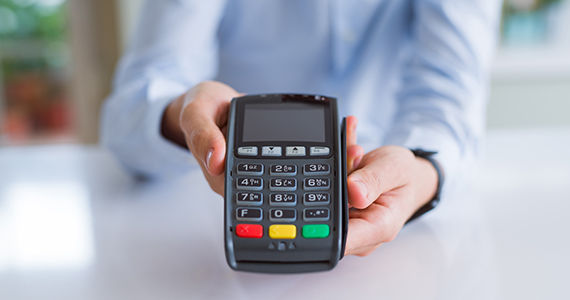After lengthy legal battles, restaurants in some parts of the United States and Canada now have the right to add a credit card surcharge to diner’s bills.
Unsurprisingly, many restaurants see this as an opportunity to recover some of the payment processing costs imposed by credit card companies by charging their customers a surcharge.
But the reactions from the public have been mixed, which begs the question: Should you charge a credit card surcharge in your restaurant?
This post will not only help you answer this question, but also shed light on the following:
- What a credit card surcharge is
- The details and rules surrounding credit card surcharges
- The pros and cons of implementing a credit card surcharge
- How restaurants are implementing this surcharge
- How customers are reacting to it
- The legality of surcharges by state
Ready? Let’s jump in.
Disclaimer: All of the information contained in this article is for informational purposes only and does not constitute legal, accounting, tax, or other professional or compliance advice. It is your responsibility to determine whether credit card surcharging is permissible in your jurisdiction. You are solely responsible for ensuring that your activity is compliant with the card network requirements and all laws applicable to you. Non-compliance may result in regulatory consequences or fines.
What Is a Credit Card Surcharge?

As a restaurateur, you’re charged credit card fees by your payment processor to offer customers the option to pay by card – whether it’s an integrated payments solution or a non-integrated one. The total cost of credit card processing for a restaurant owner is anywhere from 2 to 4% of the total amount of each transaction. The exact fees you pay depend on a variety of factors, such as the type of cards customers are using, the payment method they choose, the risk of credit card fraud, and more.
A credit card surcharge, also known as a checkout fee, happens when merchants or restaurants charge their customers an extra fee to recover these credit card processing costs. How much you can charge customers for this fee will depend on your payment processor’s pricing model, so be sure you fully understand all the credit card processing fees that appear on your restaurant’s monthly statement.

Find out which fees are negotiable and how to get the best price.
Credit Card Surcharges: The Details
In recent years, merchants in both Canada and the United States have voiced their concerns about high payment processing fees. In fact, some went so far as to file lawsuits against credit card companies in response to high payment processing fees that were imposed on them. To settle these disputes, credit card companies began allowing merchants to implement credit card surcharging and pass on the fees to their customers.
Here are the details of how credit card surcharging became legal in each country:
Canada
Starting in 2011, Canadian businesses started a class-action lawsuit against Visa, MasterCard, and other banks that issue credit cards. The lawsuit accused these credit card companies of forcing merchants to pay fixed interchange fees and restricting their ability to add surcharges or refuse higher-cost credit cards.
The settlement refunded these businesses with hundreds of millions of dollars worth of fees, according to CBC.
Additionally, Visa and Mastercard changed the standards allowing surcharging. As of October 6, 2022, Canadian merchants outside Quebec can now pass on payment processing fees to their customers, with an absolute surcharge cap set at the lower of (a) of 2.4% of the total payment, or (b) your actual cost to accept the credit card.
United States
The rule change that permitted merchants and restaurateurs to pass on a credit card surcharge to customers went into effect on January 27, 2013.
According to Reuters, the case that resulted in this settlement dates back to 2005, when a group of merchants claimed that MasterCard, Visa, and nine other companies unlawfully fixed interchange fees.
After years of negotiations, the credit card companies agreed to pay $6 billion to merchants who sued, and as part of the settlement, merchants were granted permission to charge customers up to the lower of (a) the 4% of the total payment, or (b) your actual cost to accept the credit card.
Pros and Cons of Implementing a Credit Card Surcharge
With credit card surcharges still being a relatively new concept in both Canada and the U.S., you may be conflicted about whether passing payment processing fees onto your customers is a smart business decision. Here, we’ll take a look at some of the pros and cons of implementing a credit card surcharge at your restaurant.
Pros of a Credit Card Surcharge
Higher Margins
Perhaps, the greatest benefit of adding a surcharge is that you can literally pass your credit card processing fees on to your customers. Rather than paying these fees yourself, you can set aside funds for other strategic business initiatives like investing in new equipment, labor, or adding to your marketing budget. At the same time, you are still allowing customers to choose to pay with their preferred payment type.
Encourages Payment Alternatives
By letting your guests know about surcharges, it may encourage them to pay another way, such as with cash, debit, PayPal, check, gift card, etc. This will give your guests peace of mind of knowing they can avoid surcharges, and your restaurant won’t incur any high card payment processing fees.
Cons of a Credit Card Surcharge
Not always legal
Depending on where your business operates, there could be local laws that could make it illegal for you to implement a credit card surcharge. At the time of this article was written, 10 U.S. states have surcharging restrictions including California, Colorado, Connecticut, Florida, Kansas, Maine, Massachusetts, New York, Oklahoma, and Texas. If your business is located in Canada, you do not have the option to add surcharges if you live in Quebec due to consumer protection laws.
Customer satisfaction
Another potential concern of passing fees onto guests is the fear of losing customers, or driving them toward competitors who do not have a surcharge. This has created a source of controversy among merchants who must decide if charging guests surcharges are worth the potential hit. However, this may not be as great a concern as expected as a recent study by PYMNTS revealed that 85% of surveyed cardholders who faced surcharges agreed to pay them without an issue.
How Customers Are Reacting to the Surcharge
The merchant’s reaction to the surcharge is one side of the coin, but it’s also important to consider how diners are reacting to new credit card surcharges.
Restaurants implementing a new fee may come as a shock to some customers – especially those who are seeing it for the first time. Research by PYMNTS, for example, found that the most objections were typically from cardholders who never had to pay a surcharge fee before. However, the cardholders who have paid these fees before were more willing to pay the surcharge without issue.
Additionally, many customers are taking the option to use alternative payment methods to avoid surcharges. In the same study by PYMENTS, 71% of total consumers used cash to avoid the extra fees. Interestingly, Gen Z diners used debit cards 72% of the time to avoid additional fees. Additionally, only 21% of cardholders asked to pay a surcharge felt that their satisfaction with a business had dropped.
These findings provide a positive outlook for restaurateurs who want to implement credit card surcharges. Restaurateurs also have an opportunity to explain the new fees to reduce surprises and to deter customers from becoming upset and angry at their business. Without giving the proper notice, however, restaurants may risk receiving complaints and negative reviews.

So, Should You Offer a Credit Card Surcharge?
First things first, if you’re in a state or province where it’s unlawful to impose a surcharge on clients, then the decision to add a credit card surcharge is an easy one. Unless you want to face lawsuits or heavy penalties, you definitely should not implement a surcharge. At the time this article was written, 10 U.S. states have surcharging restrictions including California, Colorado, Connecticut, Florida, Kansas, Maine, Massachusetts, New York, Oklahoma, and Texas.
In Canada, credit card surcharges are only illegal in Quebec due to consumer protection laws.If you’re in a province or state where it’s legal to impose surcharges or the laws are changing, then your decision to implement a credit card surcharge isn’t as clear-cut. It’s not a choice we can make for you, but we can equip you with all the information you need to help you make an informed one, which starts with being fully aware of the pros and cons of offering a surcharge and exploring other options for covering these payment processing costs.
Review the Options Available to You
When reviewing your options, it’s important to check with your POS provider or payment processor to see how you can implement the surcharge.
You’ll need to make sure that your equipment is capable of recording surcharges according to the requirements of credit card companies. Additionally, you’ll need to ensure that your POS or payment processor is transparent about the surcharge amount you implement. For example, you should be able to include the surcharge total as a separate line item on a customer’s receipt.
The list below is a high-level summary of the steps are generally required to implement a credit card surcharge:
- Assess whether credit card surcharge is allowed in your state/province and the amount allowed
- Letting your credit card network/acquirer know your intent to surcharge at least 30 days before surcharging
- Posting a credit card surcharge sign when customers enter your business
- Posting a surcharge percent or amount at the point of sale transaction
- Itemizing the dollar amount on the receipt or on your point of sale
Note that each card brand has its own requirements, so we recommend reviewing the specific requirements of each brand.
Understanding the Consequences of Offering a Surcharge
On the one hand, offering a credit card surcharge allows you to recover some of the credit card transaction costs you pay to payment processing companies. And let’s face it, these can be hefty, depending on your payment processor. For many restaurateurs, this is a strong reason to immediately implement a surcharge, realize an instant cost saving, and improve their bottom line.
On the other hand, implementing a surcharge could lead to surprised customers, complaints, and even lost business. To reduce the chance of shock to guests by adding an extra fee, it’s crucial to provide notice and increase transparency in your communications. Be upfront with your customers from the start – clearly communicate this surcharge on your menu signage, and make sure serving staff are informed. Let’s face it, most of us aren’t happy with businesses when we feel they’re hiding something from us. Your customers are no different.

Find out which fees are negotiable and how to get the best price.
Exploring Other Options Besides a Surcharge
There are also other ways to recoup your credit card transaction costs that, when used together, will help you save money without alienating guests:
- Specify a minimum purchase amount for credit card transactions to avoid paying exorbitant credit card fees.
- Make sure your menu prices already factor in the surcharge. Calculate your costs of goods sold (COGs) and see if there is room to increase those prices to account for credit card fees on each check, while still remaining competitive.
- Review and change your payment processor. Because surcharges originate from the problem of high credit card transaction fees, finding a different restaurant merchant services provider with a more reasonable pricing model can help you better manage these daily operating costs.
A Few Final Words on Credit Card Surcharges
Credit card transaction costs are part of running any restaurant. And while deciding to charge a surcharge is one way for you to recover this cost for your restaurant, it’s not a decision you should take lightly.
If you’re thinking about offering a surcharge in your restaurant, you need to make an informed decision. Make sure you understand the credit card surcharge rules in your province or state, review both the pros and cons, and investigate other available options to make up the fees.
Learn how to save money on payment processing fees
Sign up for our free weekly TouchBistro Newsletter







